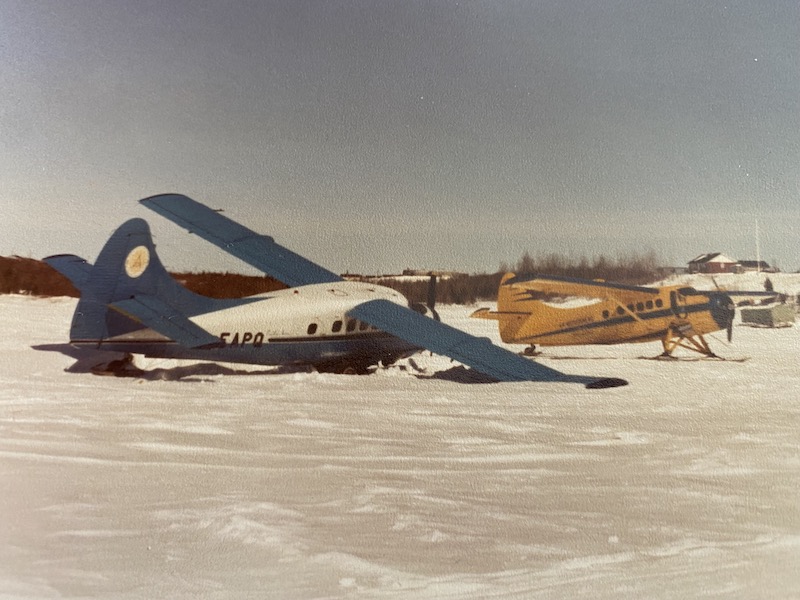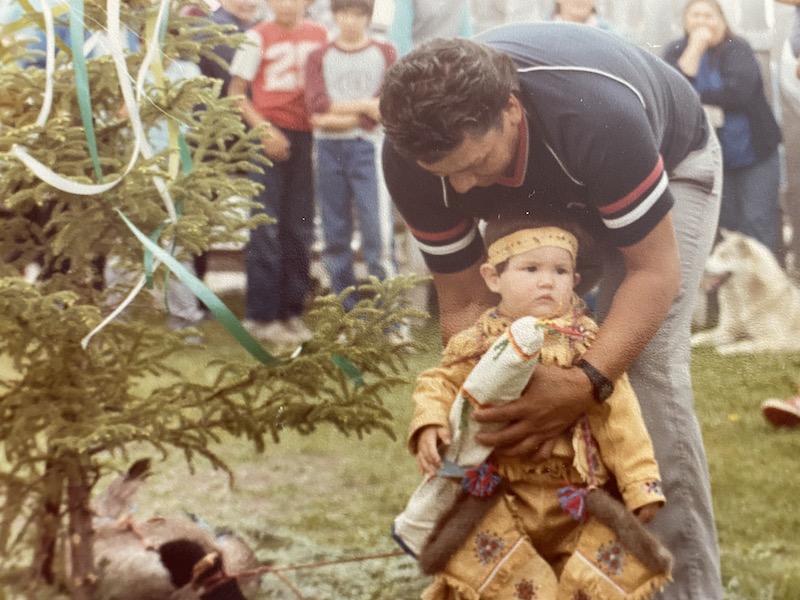Maggie Petawabano wasn’t exactly sure when her late husband Paul first got the urge to fly. She thinks it was when, as a boy, he became curious about all the planes flying in and out of Mistissini, carrying curious new goods, then disappearing again into the sky.
Maybe it was seeing the condensation trails from a jet flying tens of thousands of feet overhead, and wondering who was on board, where were they from and where were they headed? Either way, once Paul got into the skies, he just continued to soar.
As the first Cree pilot in Mistissini, and possibly in Eeyou Istchee, Paul became known in the community as the best bush pilot around, and for his acts of kindness.
He was born January 18, 1943, according to his mother, though the government at the time mixed up the dates and registered his birthdate as December 21, 1942. “He kept insisting he had two birthdays,” Maggie recalled with a laugh.
Growing up, Paul attended residential school, and studied in Moose Factory and later completed high school in Sault Ste. Marie. He had applied to become an engineer while in high school but returned home before he received his acceptance.
Out of the ordinary for the time, an Indian Affairs agent helped Paul enrol in a flight school outside Montreal and got Indian Affairs to pay for it. He was able to get his private and then his commercial license.
Don MacLeod, a friend of Paul’s since they were teenagers, said that as Paul got older, he talked about wanting to become a pilot. “The only person against it was his mother. She didn’t think it was safe, but he was determined and worked at it.”
It was around this time in 1965 that he met Maggie, and they were married two years later, in 1967.
“He didn’t get any work at first, he had to build up flying hours, but it’s hard to do without work or being a co-pilot,” Maggie explained. He got work at Hudson’s Bay, but discovered an airline industry that was unwelcoming towards Indigenous people. “Nobody was hiring Native people, saying they weren’t dependable,” Maggie added.
Things would change when a young missionary arrived, who had a pilot license and his own plane. Larry Linton says he first arrived in Mistissini in 1965 on a survey trip to the community to see who was living there, how big the village was, and to investigate becoming a minister there.
“He was a long-haired, short, wide kid like me, always quick to adapt. We just took to each other,” Linton said of meeting Paul. “At the time I didn’t know he was flying.”
Linton says he heard that Paul had been told at the time by another pilot that he wasn’t welcome to sit up front as the co-pilot, and that “Indians and Blacks were in the back seat,” which didn’t sit right with him.
Since Paul knew the land so well, Linton offered to let him fly an aircraft he owned. This is how Paul was able to build up his flying hours and get his float endorsement to fly seaplanes that were more common in bush flights.
Eventually, Paul was hired as a pilot with Direct Air, where he started out flying a small Cessna, before moving to the DHC-2 Beaver, and eventually to the larger DHC-3 Otter. But Paul wasn’t happy with the company, noting that they were overcharging Native people.
That’s when Paul began working with former Grand Chief Matthew Coon Come, who helped him establish Waasheshkun Airways in 1980, which still exists to this day, after he sold it to Mistissini. In 1984, Waasheshkun Airways acquired an Otter, followed by a Beaver in 1985, and a second Otter in 1988.
Maggie recalls those early years as being filled with work. “It was only him and Matthew at the beginning. He was the only pilot, looking after the books, the bookings, pretty much the only employee at the beginning. Eventually he hired someone to do the office work.”
Then she added, “He worked long hours. He would be gone by sunrise, and come home at 10 at night, then he had to do paperwork and logbooks.”
During those years of hard work, Paul gradually earned his reputation as one of the best bush pilots in the area, if not the country, as stories of his feats grew.
MacLeod said that flying with Paul, “You were never worried about getting stuck in the bush. If you did get stuck, he could put up shelters and take care of you.”
One of his most famous stories involves taking off one winter morning with a group of school children who were related to him. Linton says he was on the dock, and noticed something was wrong, as the plane hit a huge snow drift and lost a ski.
Linton remembers contacting Paul on the bush radio. “I said, you’re in trouble Paul. He said, I know that, but I’m not telling the kids that.”
Paul carried out the flight as if nothing happened, until it came time to land. Using the one remaining ski, he was able to slide on the snow and spin the plane around until it could touch down safely, with nobody hurt.

Linton recalls another incident, where Paul’s Beaver fell through the top ice and got stuck, where it froze overnight. He had to enlist his mother and aunt to sit on a pole to pry the plane out of the ice as he tried to take off, which ended with them upside down in the snow and with their skirts caught up in the wind.
But more than anything, Paul is remembered for the kindness and care he showed to others.
When Linton’s eldest son passed away, Paul wanted to give him pilot wings, but the local jeweller didn’t have any. Paul had some specially made so that Linton’s son could be buried with them.
Another time, Maggie found out that a local man couldn’t afford to get to his trapline, so Paul arranged to take him up at no cost. “He just loved staying at their camps overnight if the weather wasn’t good.”
An avid outdoorsman, Maggie laughed when recalling that Paul’s idea of vacation wasn’t to head south, but to fly north. He taught his children to hunt, including his daughters, and he loved to fish as well. He liked to fly trappers and fisherman up to their camps.

“As he got older, as his kids had their own families, the grandkids learned to hunt from grandpa. That’s how the grandkids remember him, hunting and fishing, and his great sense of humour,” Maggie recalled.
Paul’s career as a pilot ended due to flight requirements after he was diagnosed with diabetes around 1990. Then later, he was diagnosed with cancer.
Paul passed away in August 2007, leaving behind his wife Maggie, five children (two children had predeceased him), and 13 grandchildren.
Photos provided by Maggie Petawabano





